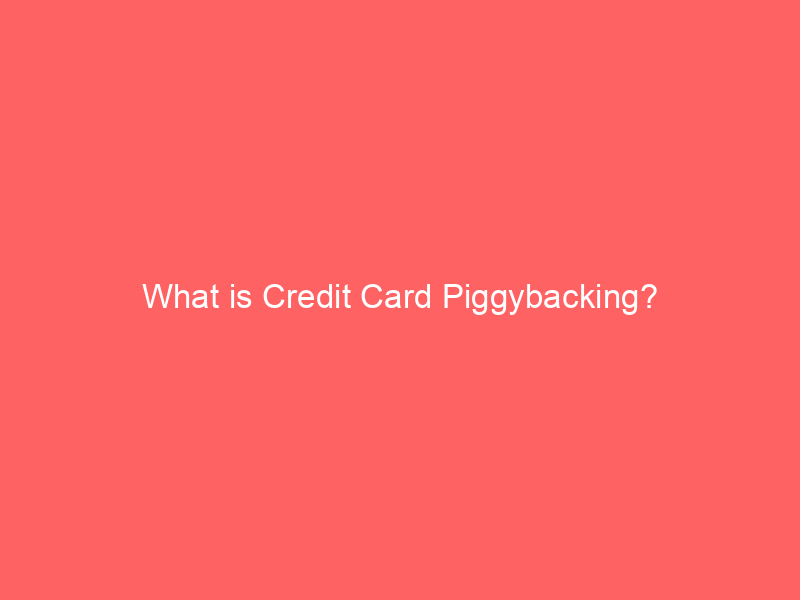
What is Credit Card Piggybacking? A Comprehensive Guide to Protecting Your Finances
Credit card piggybacking is a sophisticated and increasingly common scam that involves manipulating the networks of multiple credit card issuers to overcharge unsuspecting consumers. This practice can lead to significant financial losses, particularly for vulnerable individuals who don’t fully understand the intricacies of credit card security protocols.
Understanding the Basics of Credit Card Transactions
Credit cards offer a convenient and safe way to make online and offline purchases. The underlying technology, known as the Payment Card Industry Data Security Standard (PCI DSS), ensures the secure transmission of sensitive financial information between the cardholder and the merchant.
The credit card network maintains a dedicated system known as the Payment Card Industry Data Security Standard (PCI DSS) that outlines a set of guidelines and best practices for merchants to follow when handling credit card transactions. These guidelines prioritize data protection and minimize the risk of fraud.
How Credit Card Piggybacking Works
Credit card piggybacking involves a criminal exploiting vulnerabilities in the payment card networks to gain unauthorized access to the sensitive financial data of unsuspecting consumers. Here’s how it typically works:
1. Phishing: A fraudulent actor sends a malicious email or website link to the target, posing as a legitimate merchant.
2. Clicking: The victim clicks on the link, unknowingly directing their credit card information to the attacker’s fraudulent website.
3. Overcharging: The attacker submits the credit card information to the payment card network, which processes it fraudulently.
4. Repeat: The cycle repeats, with the attacker acquiring more credit card information and overcharging innocent users.
How to Protect Yourself from Credit Card Piggybacking
Given the potential for significant financial losses, it’s crucial to adopt proactive measures to protect yourself from credit card piggybacking:
* Be cautious of suspicious emails and websites: Verify the identity of the merchant before entering any sensitive information.
* Verify the legitimacy of online purchases: Look for the padlock icon in the address bar to ensure the website is secure.
* Use strong passwords and two-factor authentication: Make it significantly harder for unauthorized individuals to gain access to your accounts.
* Monitor your credit card statements regularly: Report any suspicious activity immediately.
* Report fraudulent transactions to the credit card network: This is crucial for identifying and halting fraudulent activity.
Conclusion
Credit card piggybacking is a dangerous and deceptive practice that can have devastating consequences for victims. By understanding how it works, taking proactive steps to protect yourself, and remaining vigilant against fraudulent emails and websites, you can significantly reduce your risk of falling victim to this scam. Remember, your financial security is paramount, and vigilance is key to safeguarding your finances from such malicious activities.







